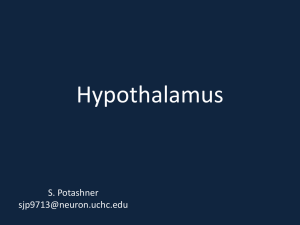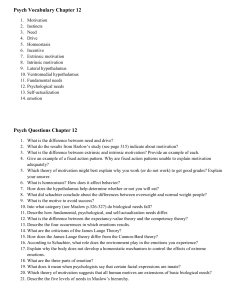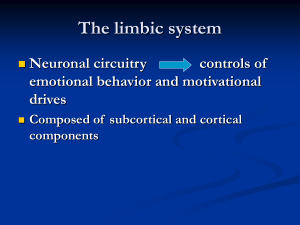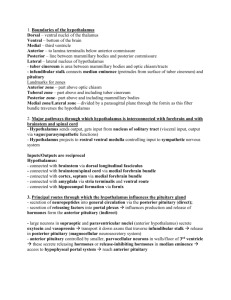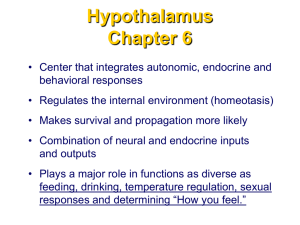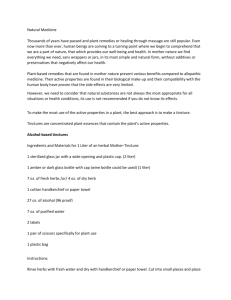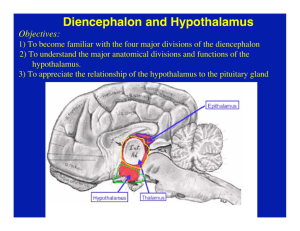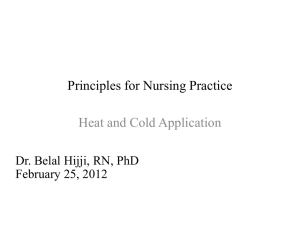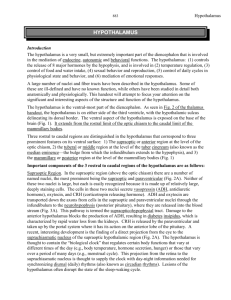Understanding the Hypthalamus
advertisement
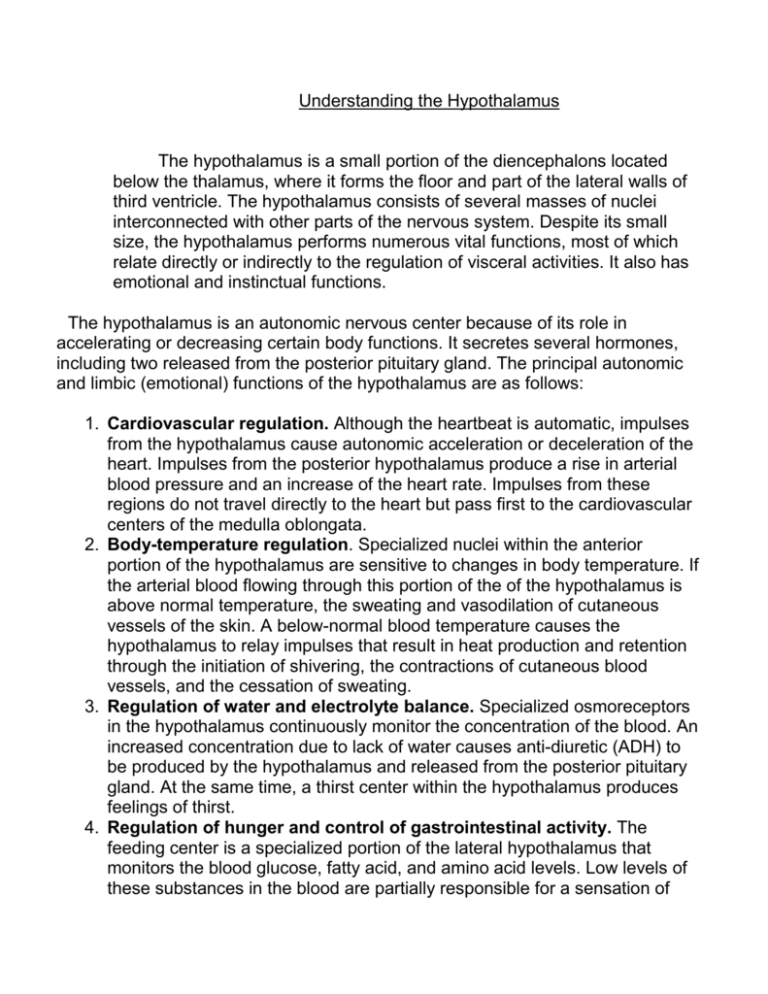
Understanding the Hypothalamus The hypothalamus is a small portion of the diencephalons located below the thalamus, where it forms the floor and part of the lateral walls of third ventricle. The hypothalamus consists of several masses of nuclei interconnected with other parts of the nervous system. Despite its small size, the hypothalamus performs numerous vital functions, most of which relate directly or indirectly to the regulation of visceral activities. It also has emotional and instinctual functions. The hypothalamus is an autonomic nervous center because of its role in accelerating or decreasing certain body functions. It secretes several hormones, including two released from the posterior pituitary gland. The principal autonomic and limbic (emotional) functions of the hypothalamus are as follows: 1. Cardiovascular regulation. Although the heartbeat is automatic, impulses from the hypothalamus cause autonomic acceleration or deceleration of the heart. Impulses from the posterior hypothalamus produce a rise in arterial blood pressure and an increase of the heart rate. Impulses from these regions do not travel directly to the heart but pass first to the cardiovascular centers of the medulla oblongata. 2. Body-temperature regulation. Specialized nuclei within the anterior portion of the hypothalamus are sensitive to changes in body temperature. If the arterial blood flowing through this portion of the of the hypothalamus is above normal temperature, the sweating and vasodilation of cutaneous vessels of the skin. A below-normal blood temperature causes the hypothalamus to relay impulses that result in heat production and retention through the initiation of shivering, the contractions of cutaneous blood vessels, and the cessation of sweating. 3. Regulation of water and electrolyte balance. Specialized osmoreceptors in the hypothalamus continuously monitor the concentration of the blood. An increased concentration due to lack of water causes anti-diuretic (ADH) to be produced by the hypothalamus and released from the posterior pituitary gland. At the same time, a thirst center within the hypothalamus produces feelings of thirst. 4. Regulation of hunger and control of gastrointestinal activity. The feeding center is a specialized portion of the lateral hypothalamus that monitors the blood glucose, fatty acid, and amino acid levels. Low levels of these substances in the blood are partially responsible for a sensation of 5. 6. 7. 8. hunger elicited from the hypothalamus. When sufficient amounts of food have been ingested, they satiety center in the mid-portion sensory impulses from the abdominal viscera and regulates glandular secretions and the peristaltic movements of the digestive tract. Regulation of sleeping and wakefulness. The hypothalamus has both a sleep center and a wakefulness center that function with other parts of the brain to determine the level of conscious alertness. Sexual response. Specialized sexual center nuclei with the posterior portion of the hypothalamus respond to sexual stimulation of the tactile receptors within the genital organs. The experience of orgasm involves neural activity with the sexual center of the hypothalamus. Emotions. A number of nuclei within the hypothalamus are associated with specific emotional responses, such as anger, fear, pain, and pleasure. Control of endocrine functions. The hypothalamus produces neurosecretory chemicals that stimulate the anterior pituitary to release various hormones, which in turn regulate other endocrine glands. The hypothalamus also produces the two hormones secreted by the posterior pituitary gland.
